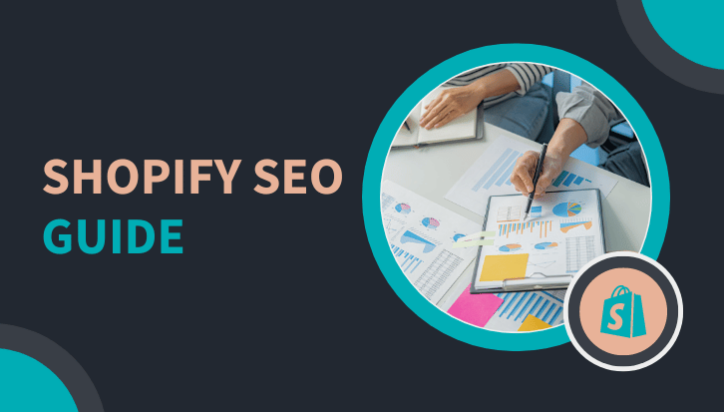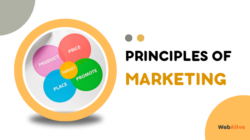
Shopify SEO Guide: A Complete Checklist for Website Owners
There are over 8.5 billion search queries that Google processes per day worldwide!
Yes, that’s right.
Be it to compare prices between products, to check quality or to discover new brands or goods, users simply rely on search engines like Google. No wonder taking the website to the top of SERP is important more than anything.
And whenever it’s about making websites more visible on search results, you have definitely heard the term SEO being tossed around. SEO is what position your brand and creates traffic and sales while improving all other aspects like a high-quality shopping experience.
So as a Shopify store owner, if you are thinking of optimising your Shopify website for search engines to make your shop easy to be found on Google, you are definitely on the right lines.
Let’s break down how to do it.
Key steps to improve SEO on your Shopify website
Simply put, Shopify offers an excellent set of SEO tools that cover all of the basics that an online store might require. You can definitely take advantage of all the built-in SEO features. But these are unlikely to be enough to make it to the top of search engine ranks.
So, here comes the question, how to improve SEO on Shopify?
Let’s walk through the key steps that influence your search ranking directly.
1. Set your preferred domain
Setting your preferred domain is one of the first things you need to do in the website development process. Pick a preferred version of your domain and redirect all other versions to that preferred version to consolidate your website’s authority and improve search engine visibility by preventing duplicate content and consolidating link juice.
For example, your site can be accessible at
- http://example.com
- http://www.example.com
- https://example.com
- https://www.example.com
Shopify works great when it comes to redirecting alternatives to the one that it thinks is your preferred domain. However, to be sure, check your domain settings and set your preferred one as primary.
2. Optimise your site structure
Website structure is crucial for your Shopify SEO success. Because, when your users are visiting your website, they want to be able to find items easily; so do the search engine crawlers to index your site. And a site structure is what allows you to tell search engines what you want them to see.
In order to ensure that your users and crawlers can navigate your site effortlessly, go for a well-structured and logically ordered navigation system. Don’t overcomplicate, try to keep it short and simple. Maintain a clear hierarchical structure for your categories and subcategories while organising your website’s pages.
Focus on whether your most important pages are easily accessible from your homepage. Make use of breadcrumb menus, descriptive URLs, header tags and internal linking.
3. Ensure a positive customer experience
One way to improve user experience is to increase your site speed. It is a signal used by search engines to rank websites. The lower your Shopify site takes to load, the higher your SEO rank.
Here are some things you can try on to make your Shopify site load as quickly as possible.
- Remove all unnecessary and unused apps that you don’t really need.
- Optimise the file sizes of images and videos without compromising the quality.
- Ensure less use of any external scripts or custom codes.
- Avoid using a large number of web fonts.
- Minifying your HTML, CSS, and JavaScript files can improve your page speed score.
Another way to meet user expectations is to have a responsive design for your Shopify store. With more and more users accessing the internet through smartphones, a mobile-friendly store website is a must.
So, use a responsive theme so that the design looks great on any device be it a mobile phone or desktop or tablet. You should take into the responsiveness, mobile visual hierarchy as well as navigation. For example, dropdowns and huge menus don’t perform great on mobile, so you have to go for an effective navigational structure.
4. Find the right keywords
Start by finding relevant keywords for your Shopify store related to your products or industry. You can use tools like SEMrush, Ahrefs or Google Keyword Planner to figure out the search volume and competition level. Take the search intent into consideration, whether it is informational, navigational or transactional. Analyse your competitor’s strategy as well and find out the keywords they are targeting.
Once you identify relevant keywords, incorporate them into your Shopify site’s page content like the homepage, product pages and product category pages. Also determine where on those pages you will include the keywords like the page title, meta description, image Alt text and more. This helps web crawlers to find your pages easily and results in the rise of search engine rankings.
But be careful of keyword stuffing as it can get your Shopify site ranked lower. So, ensure a natural and logical fit when implementing keywords.
5. Conduct Shopify on-page SEO
In order to make your web pages more valuable and relevant to users and search engines, perform on-page SEO.
Perfect your product pages
When optimising your product pages, start with the pages that yield the best conversions. Such as, you can start with your home page, then main product collections and then top-sellers pages. Get your page and product titles right since search engines consider “title tags” as key pieces of information to rank your content. Put navigation on point and check whether metadata is in place. Optimise the headline and write thoughtful product and category descriptions including your focus keyword.
Optimise metadata
Metadata is the key way of talking to search engines. The unique metadata is what helps search engines understand the content of the page better. As Shopify meta titles and descriptions are individual to each of the pages, you should craft carefully to optimise metadata effectively.
When optimising meta titles, contain the target keywords you are trying to rank for. Keep it short yet descriptive enough to tell search engines and visitors what they can expect from the page. Then, to optimise your product page meta description, make it specific and relevant.
Optimising meta descriptions and meta titles on Shopify is easy.
- In your Shopify admin panel, navigate to Online Store > Preferences.
- Click on ‘Edit website SEO’ in the Search engine listing preview section.
- Fill in a meta title and description that is relevant and captivating for each page, including your target keywords.
- Remember to keep your title within 55-65 characters and your description within 150-160 characters to avoid truncation in search results.
Build internal and external link system
When you build a strong linking structure, it eventually helps search engines understand the relevance and authority of your site attracting more organic traffic. Internal linking refers to connecting pages with your own website. Using descriptive anchor text that incorporates relevant keywords when building internal links is a good practice.
This helps search engines in comprehending the context of the linked page. And for external linking, look for relevant and high-quality websites to link to. Regularly monitor your link structure to keep an eye out for any broken or dead links that might result in a negative user experience.
6. Leverage content marketing
Content marketing is a crucial part of the overall Shopify SEO strategy. Google likes new and updated content. So, keep creating valuable, relevant and consistent content to establish trust and credibility. Blogging is one effective way to share content. Luckily, Shopify provides a built-in blogging feature.
With a Shopify store, you can publish articles related to your industry, products or customers’ query. Having a blog, you can even boost product pages with internal links. You can effortlessly share your blog content on social media or other marketing channels and attract more traffic and engagement.
7. Get backlinks to your store
Search engines use links to evaluate the quality and relevance of a website’s content. The more quality links a website holds pointing to it, the more likely it is to rank higher in the search engine results pages.
So, begin a backlink-building effort by reaching out to other reputable and relevant websites in your niche and requesting them to link back to your Shopify store in exchange for a link back to theirs. You can write guest posts for relevant websites including links back to your Shopify store. But avoid the practice of buying links as you might get penalised by search engines.
Wrapping up
That’s all!
With the mentioned tips, you already get to know everything you need to get the ball rolling. So, make the most of your Shopify site’s SEO strategy. Alongside this, ensure the best use of Shopify’s built-in features that comes combined with the SEO tools. Plus it is wiser to consult with Shopify experts to get more strategies.
Lastly, another important tip, SEO is an ongoing process. Make sure you update and review your website’s SEO strategy on a regular basis.
You read a lot. We like that
Want to take your online business to the next level? Get the tips and insights that matter.

